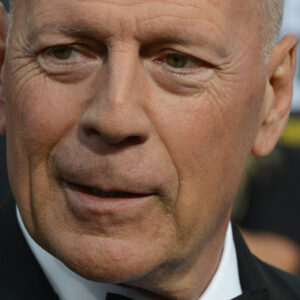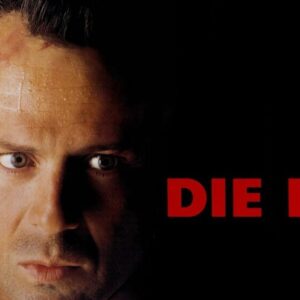Cillian Murphy is a name synonymous with versatility, intensity, and an undeniable screen presence. Whether it’s his chilling portrayal of Tommy Shelby in Peaky Blinders, his mind-bending turn in Inception, or the haunting vulnerability he brings to roles like 28 Days Later, Murphy has cemented himself as one of the finest actors of his generation. Yet, what many fans may overlook is his impact beyond cinema, specifically his foray into the realm of music videos—a genre often underestimated in its artistic potential.
In an age where music videos have become more than just a tool for promoting albums, they stand as a cultural touchstone, blending visual storytelling with auditory artistry. Murphy, in his quiet yet potent way, has played an essential role in elevating the genre, bringing his cinematic sensibility to music video performances. His contributions have not only bridged the worlds of cinema and music but have also changed the landscape of visual storytelling in this medium. Let’s delve into the significant milestones of Murphy’s journey in music videos, and how he has redefined expectations, blurred lines, and inspired others in the process.
Notable Appearances in Music Videos
Murphy’s entrance into the music video world was not some passing flirtation or a mere cameo. His first major role came in 2013, starring in Paul Hartnoll’s video for “The Clock.” While Hartnoll may be best known as one-half of the electronic duo Orbital, this project felt more intimate, meditative, and conceptually rich. It was a stark departure from the typical high-energy, techno-driven visuals associated with electronic music videos. Instead, Hartnoll paired his music with a reflective, human narrative—and who better to guide viewers through this introspective journey than Cillian Murphy?
In The Clock, Murphy doesn’t rely on overt emotion or dialogue to captivate the audience. His performance, much like in his best film work, is built on subtlety. Every gesture, glance, and facial expression conveys a quiet desperation as the themes of time, human frailty, and existential contemplation unfold. In the span of a few minutes, Murphy reminds the viewer that acting, even in the short form, can stir deep emotional responses.
Later, in 2018, Murphy returned to the music video scene with The Cry of the Lone Wolf by Grizzly Bear. If The Clock showcased Murphy’s ability to channel introspective emotion, The Cry of the Lone Wolf took it a step further. His performance here feels like an evolution. The video, directed by David Wilson, tells a fragmented, eerie story that weaves in and out of dreamlike sequences, where Murphy becomes the anchor. The subtle interplay between visual surrealism and his grounded, melancholic performance elevates the music to a whole new dimension. The collaboration is more than a pairing of sound and visuals—it’s a symbiotic relationship where each element enhances the other.
Blurring the Lines Between Cinema and Music
Murphy’s music video work reveals something unique about him as an artist—his seamless ability to move between the big screen and shorter, more experimental formats like music videos. It’s not simply about transitioning mediums, but about maintaining a narrative richness, regardless of the platform. Directors like David Wilson recognize the cinematic quality Murphy brings, often treating these videos like mini-films in themselves.
Take, for example, the evolution of music videos over the last two decades. While early MTV music videos were largely performance-based, Murphy’s presence in more modern productions signifies a shift toward music videos as narrative-driven, cinematic experiences. His performances draw on techniques from his film work: the understated emotion, the ability to carry a story with just his eyes, and the compelling vulnerability that invites the viewer in. In essence, Murphy blurs the lines between cinema and music videos, turning what might have been a promotional tool into a form of high art.
This shift echoes through the industry, with music video directors increasingly focusing on narrative cohesion and emotional depth. The success of Murphy’s music video performances has inspired a movement that rejects the idea of these videos being “just music videos” and embraces them as standalone cinematic expressions. Murphy’s involvement legitimizes the medium as an art form unto itself—one capable of telling stories that resonate on emotional and psychological levels.
Inspiring Other Musicians and Actors
Murphy’s influence in the music video space cannot be overstated. His presence has led other actors and musicians to view the medium differently, seeing music videos not as a side project but as an opportunity to explore new forms of storytelling. In recent years, we’ve seen a surge in collaborations between A-list actors and musicians, many of whom may have taken cues from Murphy’s successful ventures in this space.
What makes Murphy’s music video performances so captivating is his natural ability to disappear into characters and situations—even when there’s no dialogue, as is often the case in music videos. He proves that music videos, like films, can explore complex human emotions. This creates a ripple effect, as more actors and musicians gravitate toward projects that challenge the boundaries of traditional mediums. Artists such as FKA Twigs and Childish Gambino have taken note, using their music videos as experimental platforms for both music and narrative, often casting well-known actors to bring their visions to life.
Murphy’s presence in the medium has shown that music videos don’t need to be simplified, commercialized representations of songs; they can be artful, nuanced, and emotionally engaging. This shift is palpable, with more musicians now seeking out actors of Murphy’s caliber to enhance the storytelling in their music videos.
Redefining Visual Storytelling in Music
Murphy’s impact on music videos goes beyond the simple inclusion of cinematic techniques. His presence has helped redefine the ways in which visual storytelling complements the music. Traditionally, music videos were vehicles for the song itself. But Murphy’s acting changes the equation—his ability to inhabit roles so completely, even in short, dialogue-free formats, allows directors to tackle more profound and often darker themes.
This trend can be traced back to his initial music video appearances. Directors like David Wilson or Paul Hartnoll don’t just use Murphy as a recognizable face; they employ his talent to explore intricate themes such as time, solitude, and mental disarray. Murphy’s involvement elevates these stories, proving that even a five-minute music video can deliver emotional complexity.
Murphy’s work has prompted more directors to approach music videos with a similar mindset, focusing on character-driven narratives and emotional depth. This evolving trend reflects the growing recognition of music videos as an important art form, capable of addressing the same themes as films. Murphy’s legacy, then, isn’t just about his acting; it’s about helping redefine what’s possible in music video storytelling.
Conclusion
Cillian Murphy’s contributions to music videos represent a pivotal moment in the genre’s evolution. His performances elevate these short-form narratives, bringing the depth, intensity, and emotional resonance typically associated with cinema to the world of music. In doing so, Murphy has not only blurred the lines between film and music but has inspired a new generation of artists to approach music videos as serious artistic endeavors.
Murphy’s ability to carry a story—whether on a grand cinematic stage or in the brief moments of a music video—has changed the way we think about visual storytelling in music. His impact will continue to be felt, as more musicians, directors, and actors are inspired to explore the possibilities that lie at the intersection of music and film. And as he continues to redefine expectations, it’s clear that Murphy’s legacy in this space is far from over.





